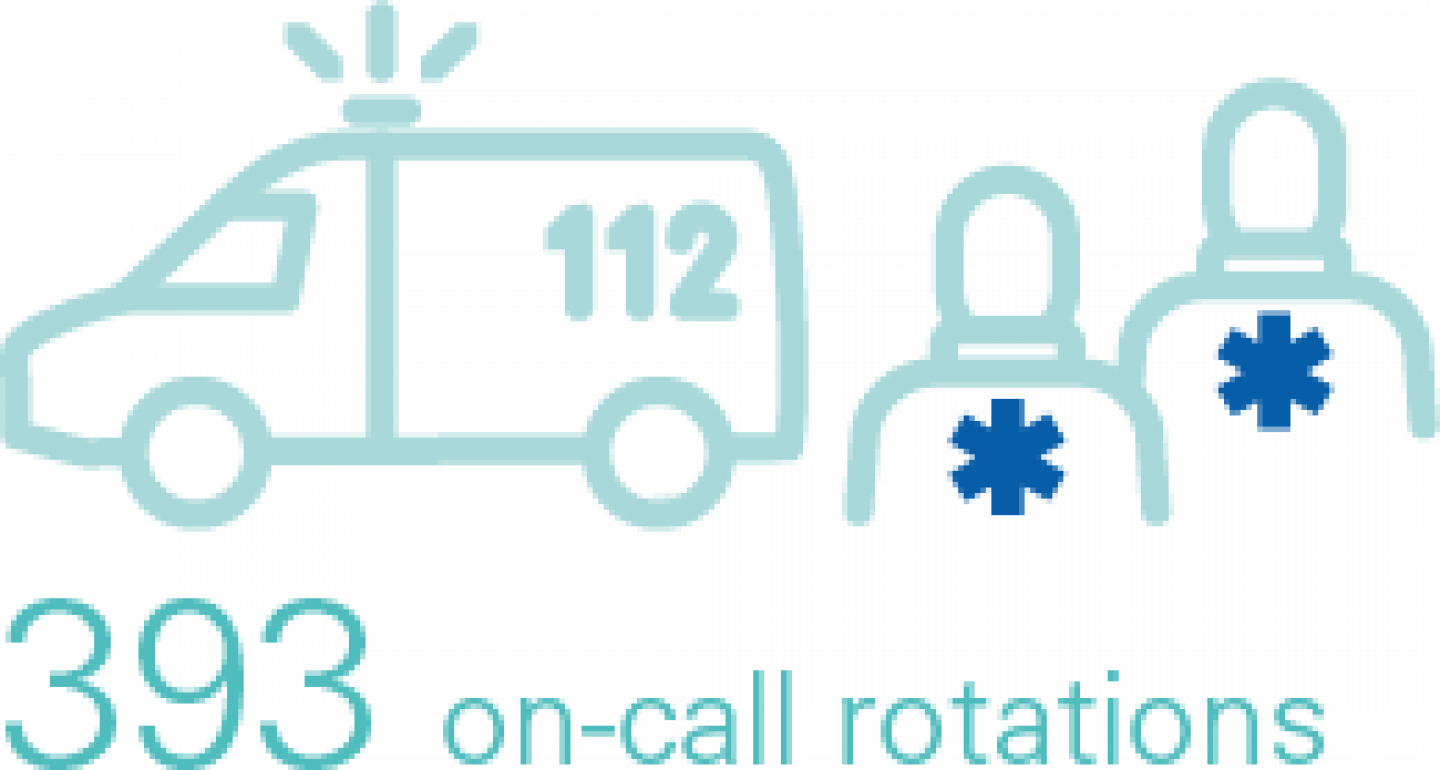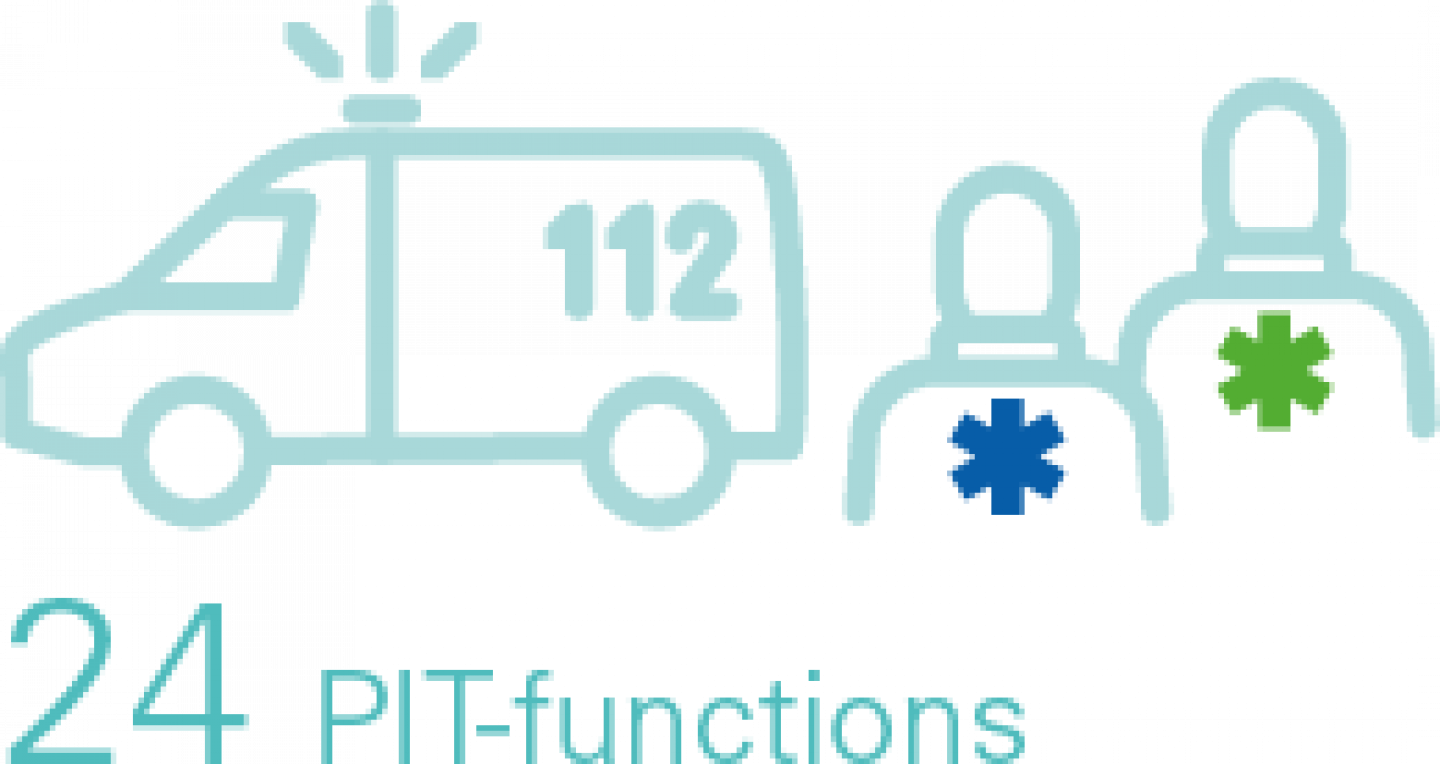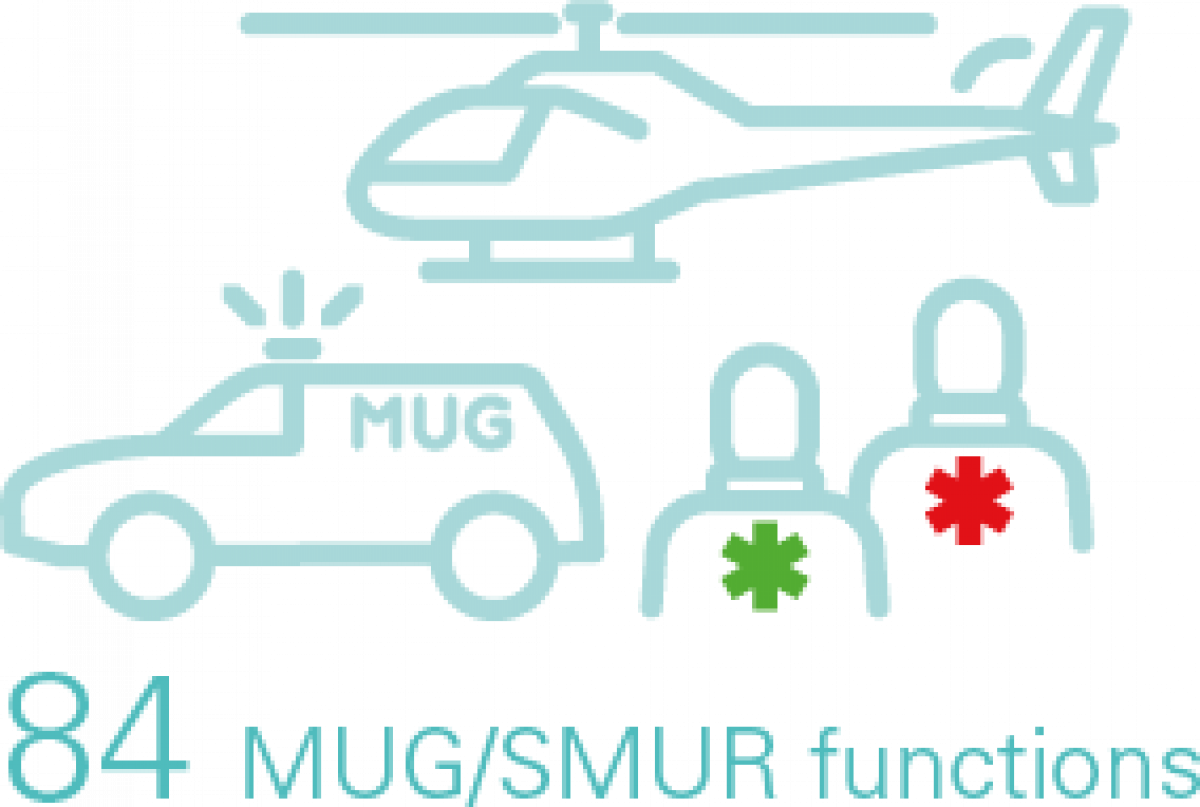In a situation where there is a need for emergency medical services, various resources can be dispatched to the location of the emergency, i.e. an ambulance, a Paramedical Intervention Team (PIT) or a Mobile Emergency Group (MUG/SMUR). On the basis of protocols established in the Belgian Medical Regulation Manual, the operator from the emergency centre determines which resource will be activated. In addition, based on the above protocols, an operator may refer the caller to an on-call general practitioner.
AMBULANCE
 |
An ambulance is a vehicle that has been specially adapted, furnished and equipped to provide basic life support at an intervention site on the one hand, and on the other hand to safely transport a patient to the hospital. An ambulance has the necessary equipment for monitoring and providing first aid. There are at least two paramedics in each ambulance. They are usually the first health workers to arrive at the intervention site. In Belgium, there are 393 on-call rotations for the dispatching of recognised ambulances. Of these, 31 are located in the Brussels-Capital Region, 210 in the Flemish Region and 152 in the Walloon Region. |
PARAMEDICAL INTERVENTION TEAM (PIT)
 |
The Paramedical Intervention Team (PIT) is a team that intervenes in more serious cases[1]. The team consists of at least one paramedic and one nurse who holds the special title of emergency nurse. A PIT can be dispatched for interventions where the care can be entrusted to a nurse. In addition, a PIT is sent in some cases when no MUG/SMUR is available. |
In addition to the basic equipment for an ambulance, a PIT ambulance must have the necessary equipment to carry out all its missions. After all, more tasks are entrusted to the nurse than to the paramedic via standing orders (see Quality chapter). This allows the nurse to perform some medical acts on the spot. Furthermore, the PIT team has the necessary communication tools to be able to contact a referring doctor if necessary. This is a doctor who remotely advises and coaches the nurse in the use of standing orders.
The PIT function is currently a pilot project whose added value is being evaluated. On 01/01/2021, 24 recognised pilot projects in the framework of a PIT function were started in Belgium, 12 of which in the Flemish Region, 9 in the Walloon Region and 3 in the Brussels-Capital Region[2]. However, when we look at the number of PIT functions per 100,000 residents, we see that there are as many PIT functions in the Walloon Region and the Brussels-Capital Region per 100,000 inhabitants, namely 0.25, and that there are 0.18 PIT functions per 100,000 residents in the Flemish Region.
Currently, no new services are being started up within the pilot project, but several hospitals are taking the initiative to upgrade an existing, recognised ambulance service to a PIT function themselves. Their number is limited, but is slowly increasing.
NUMBER ON-CALL ROTATIONS FOR RECOGNISED AMBULANCES, PIT FUNCTIONS AND MUG/SMUR FUNCTIONS PER 100,000 RESIDENTS
MOBILE EMERGENCY GROUP (MUG/SMUR)
 |
A Mobile Emergency Group (MUG/SMUR) is a mobile medical team that provides advanced life support during an intervention in the context of an emergency situation[3]. The team consists of at least one emergency doctor and one nurse who holds the special title of emergency nurse. The MUG/SMUR station is located near a hospital. |
The MUG/SMUR team is always accompanied by an ambulance at the intervention site and can be dispatched at the request of the operator at the 112 emergency centres or at the request of the on-site ambulance crews if they feel that a doctor is required.
On 01/01/2021, there were 84 MUG/SMUR functions in Belgium, 44 of which in the Flemish Region, 33 in the Walloon Region and 8 in the Brussels-Capital Region[4]. Two of these 84 MUG/SMUR functions concern MUG/SMUR helicopters based in Liège and Bruges, which are currently being evaluated as a pilot project. Looking at the number of MUG/SMUR functions per 100,000 residents, there is a greater presence of MUG/SMUR functions in the Walloon Region (0.91 per 100,000 residents), compared to 0.66 and 0.65 per 100,000 residents in the Flemish and Brussels-Capital Regions respectively. The greater presence in the Walloon Region can be explained by the more sparsely populated areas, which require a greater presence of MUG/SMUR functions to ensure rapid care. The aim is to achieve equal access to emergency assistance in the various regions of the country. To this end, the number of MUG/SMURs is determined by programming criteria based on population density and the population of each province, among other things. These were defined in a Royal Decree[5].
Learn more about the location of the recognised MUG/SMUR and PIT functions: www.health.belgium.be
[1]https://www.health.belgium.be/fr/pit-paramedical-intervention-team
[2]Source: Data and Policy Information Service, FPS HFCSE
[3]https://www.health.belgium.be/fr/smur
[4]Source: CIC, Data and Policy Information Service, FPS HFCSE
[5]RD 20 September 2002. - Royal Decree determining the details of the maximum number and the programming criteria applicable to the “Mobile Emergency Group” function
